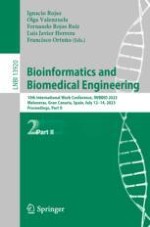2023 | OriginalPaper | Buchkapitel
An Accurate Algorithm for Identifying Mutually Exclusive Patterns on Multiple Sets of Genomic Mutations
verfasst von : Siyu He, Jiayin Wang, Zhongmeng Zhao, Xuanping Zhang
Erschienen in: Bioinformatics and Biomedical Engineering
Verlag: Springer Nature Switzerland
Aktivieren Sie unsere intelligente Suche, um passende Fachinhalte oder Patente zu finden.
Wählen Sie Textabschnitte aus um mit Künstlicher Intelligenz passenden Patente zu finden. powered by
Markieren Sie Textabschnitte, um KI-gestützt weitere passende Inhalte zu finden. powered by
